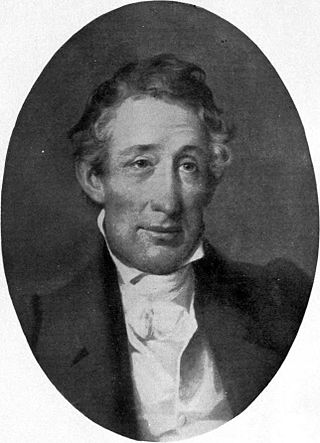
George Ord, Jr. was an American zoologist who specialized in North American ornithology and mammalogy. Based in part on specimens collected by Lewis and Clark in the North American interior, Ord's article "Zoology of North America" (1815), which was published in the second American edition of William Guthrie's Geographical, Historical, and Commercial Grammar, has been recognized as the "first systematic zoology of America by an American".
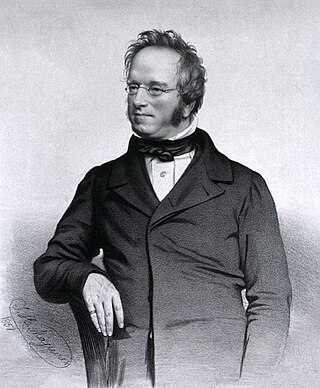
John Edward Gray, FRS was a British zoologist. He was the elder brother of zoologist George Robert Gray and son of the pharmacologist and botanist Samuel Frederick Gray (1766–1828). The standard author abbreviation J.E.Gray is used to indicate this person as the author when citing a botanical name. The same is used for a zoological name.

Sir James Edward Smith was an English botanist and founder of the Linnean Society.
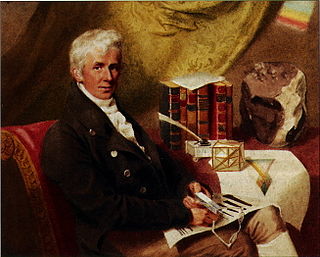
James Sowerby was an English naturalist, illustrator and mineralogist. Contributions to published works, such as A Specimen of the Botany of New Holland or English Botany, include his detailed and appealing plates. The use of vivid colour and accessible texts were intended to reach a widening audience in works of natural history. The standard author abbreviation Sowerby is used to indicate this person as the author when citing a botanical name.

Sir George Murray was a British soldier and politician from Scotland.
The New-York Mirror was a weekly newspaper published in New York City from 1823 to 1842, succeeded by The New Mirror in 1843 and 1844. Its producers then launched a daily newspaper named The Evening Mirror, which published from 1844 to 1898.
Alfred Duvaucel was a French naturalist and explorer. He was the stepson of Georges Cuvier.
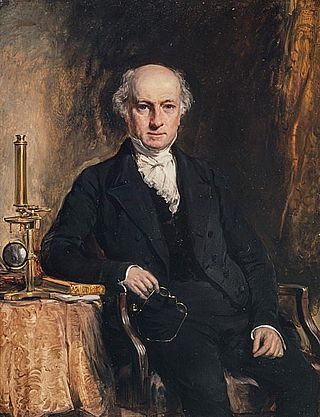
George Johnston was a Scottish physician and naturalist.

Joseph Lycett was a portrait and miniature painter, active in Australia. Transported to Australia for forging banknotes, Lycett found work in the colony as a painter specialised in topographical views of the major towns of Australia, and some of its more dramatic landscapes.
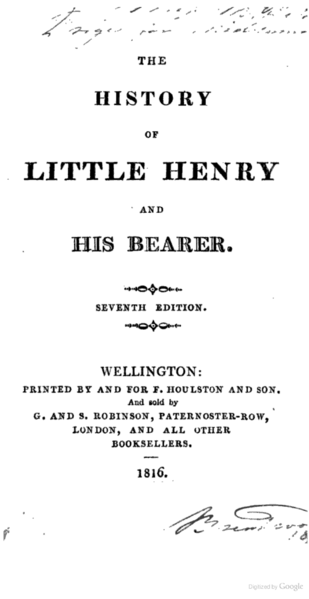
The following is a list of the published works of Mary Martha Sherwood. Because it relies on M. Nancy Cutt's annotated bibliography of Sherwood's books in Mrs. Sherwood and her Books for Children, this list does not include her many periodical articles, such as those she wrote for The Youth's Magazine. The list follows Cutt's generic divisions.

A Specimen of the Botany of New Holland, also known by its standard abbreviation Spec. Bot. New Holland, was the first published book on the flora of Australia. Written by James Edward Smith and illustrated by James Sowerby, it was published by Sowerby in four parts between 1793 and 1795. It consists of 16 colour plates of paintings by Sowerby, mostly based on sketches by John White, and around 40 pages of accompanying text. It was presented as the first volume in a series, but no further volumes were released.

Turbo is a genus of large sea snails with gills and an operculum, marine gastropod molluscs in the family Turbinidae, the turban snails.

Cerithium is a genus of small to medium-sized sea snails, marine gastropod molluscs in the family Cerithiidae, the ceriths.
George Sinclair was a Scottish gardener.

Olivella, common name the dwarf olives, is a genus of small predatory sea snails, marine gastropod molluscs in the subfamily Olivellinae of the family Olividae, the olives. Olivella is the type genus of the family.

Plesiothyreus cytherae is a species of sea snail, a marine gastropod mollusk in the family Phenacolepadidae.
The High Sheriff of Longford was the British Crown's judicial representative in County Longford, Ireland from the 16th century until 1922, when the office was abolished in the new Free State and replaced by the office of Longford County Sheriff. The sheriff had judicial, electoral, ceremonial and administrative functions and executed High Court Writs. In 1908, an Order in Council made the Lord-Lieutenant the Sovereign's prime representative in a county and reduced the High Sheriff's precedence. However the sheriff retained his responsibilities for the preservation of law and order in the county. The usual procedure for appointing the sheriff from 1660 onwards was that three persons were nominated at the beginning of each year from the county and the Lord Lieutenant then appointed his choice as High Sheriff for the remainder of the year. Often the other nominees were appointed as under-sheriffs. Sometimes a sheriff did not fulfil his entire term through death or other event and another sheriff was then appointed for the remainder of the year. The dates given hereunder are the dates of appointment. All addresses are in County Longford unless stated otherwise.
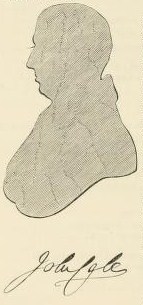
John Cole (1792–1848) was an English bookseller, publisher and antiquary, of Northampton, Lincoln and Scarborough, North Yorkshire. He was born on 3 Oct. 1792 at Weston Favell in Northamptonshire. He is remarkable as having compiled over 100 publications but whether as bookseller, lecturer, 'general factor,' or school-master, Cole was invariably unsuccessful. As self-trained and industrious antiquary, he appears to have been utterly unsuited for the cares of a business life and he was constantly on the move and died in poverty. Cole generally printed only few copies of his books which make them rare. As his books contain much out-of-the-way information, they are sought after by collectors. He was in the habit of binding up extra plates and additional manuscript matter in his private copies. A silhouette portrait of Cole and facsimile of his handwriting are given in the Yorkshire Library

George Henry Ford aka G. H. Ford, was a South African natural history illustrator who joined the British Museum in 1837. He portrayed animals and produced the plates in Sir Andrew Smith's Illustrations of the Zoology of South Africa.

The Literary Magnet was a British magazine. Started as a weekly magazine in 1824 by Egerton Brydges and his son using the pseudonym Tobias Merton, it became a monthly magazine towards the end of 1824. The Magnet went through a number of editors, and was bought first by Alaric Alexander Watts in late 1825, and then William Charlton Wright in 1828. Its primary emphasis shifted from prose to poetry under Watts, who managed to get contributions from several notable poets of the day.
















